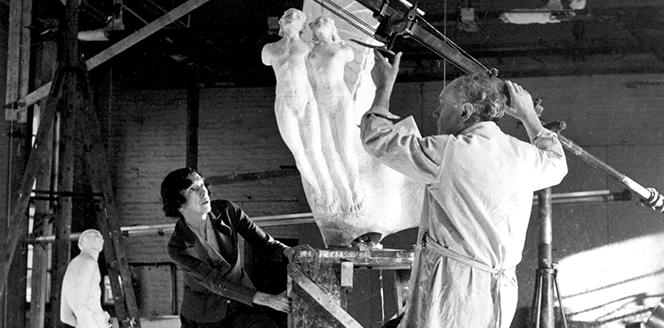Art & Exhibitions
Landmark Designations for Whitney and Wyeth Studios


Sarah Cascone

Something about the onset of fall this year seems to have triggered art lovers’ preservationist urges, as both Andrew Wyeth and Gertrude Vanderbilt Whitney‘s former studios, in Pennsylvania and New York, respectively, have been granted landmark status. Even the UK is getting in on the act, reports the BBC, with England’s Beamish Museum announcing plans to reconstruct the historic work space of coal miner-turned-painter Norman Cornish, donated to the institution after the artist died this August at age 94.
Back in New York, the PreservationNation Blog writes that Vanderbilt’s Greenwich Village studio, recently named a National Treasure by the National Trust for Historic Preservation, is being restored by its current owner, the New York Studio School of Drawing, Painting, and Sculpture.
Despite being born to the wealthy Vanderbilt family in 1875, and marrying the equally well-off Harry Pyne Whitney, Vanderbilt maintained a vibrant studio practice as a sculptor throughout her adult life. To the horror of her peers, the heiress worked out of a converted stable on MacDougal Alley. As one contemporaneous newspaper headline put it: “Daughter of Cornelius Vanderbilt Will Live in Dingy New York Alley.”
In her efforts to support fellow artists, Whitney purchased a nearby townhouse, which eventually became the first home of the fledgling Whitney Museum, the first institution devoted to 20th century American art. As that museum now prepares for yet another move, from the Upper East Side to the Meatpacking District (see “New Whitney Building, Like Noah’s Ark, Could Ferry All of American Art to Safety“), the Studio School, housed at the original museum complex, will honor Whitney by restoring her historic studio space to its original appearance.
As reported by Artfix Daily, the studio in Chadds Ford studio where Wyeth painted from 1940 to 2008 has received National Historic Landmark designation from the National Park Service. The studio has been added to the Kuerner Farm site, which inspired over 1,000 of the artist’s works and was added to the registry in 2011. The nearby home and studio of the artist’s father, N.C. Wyeth, was declared a landmark in 1997. Both sites are now managed by the Brandywine River Museum of Art, and are open to the public for daily tours.